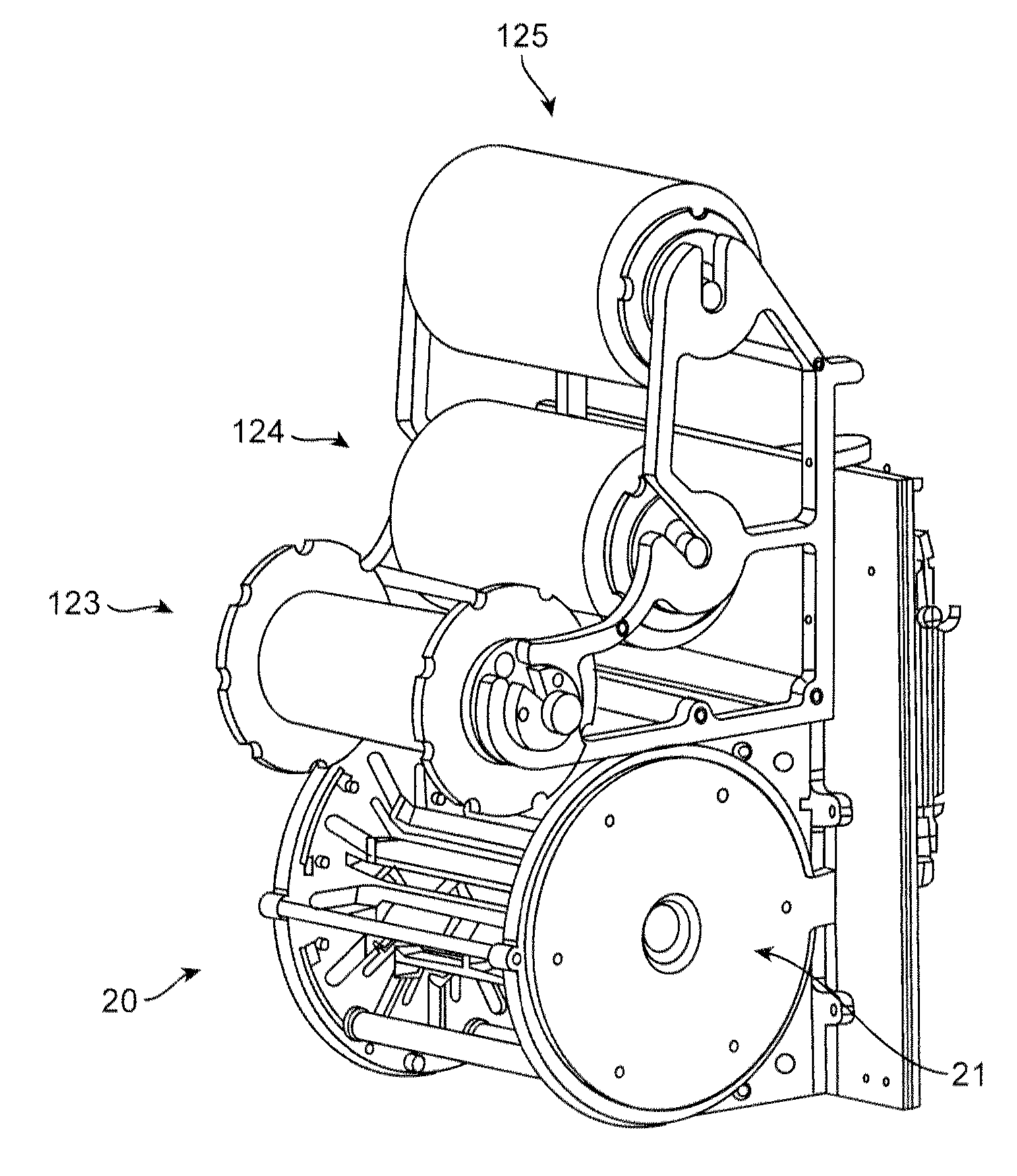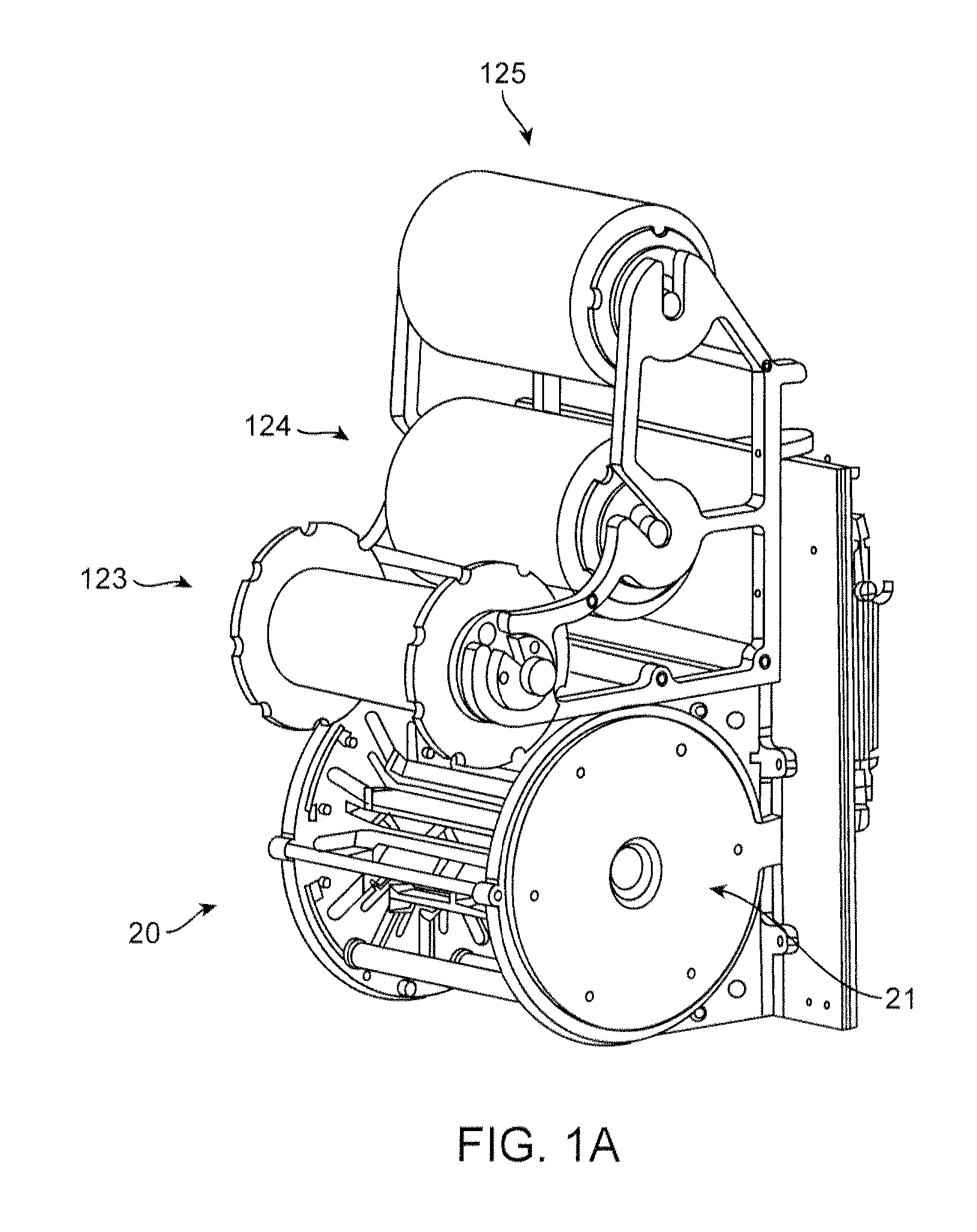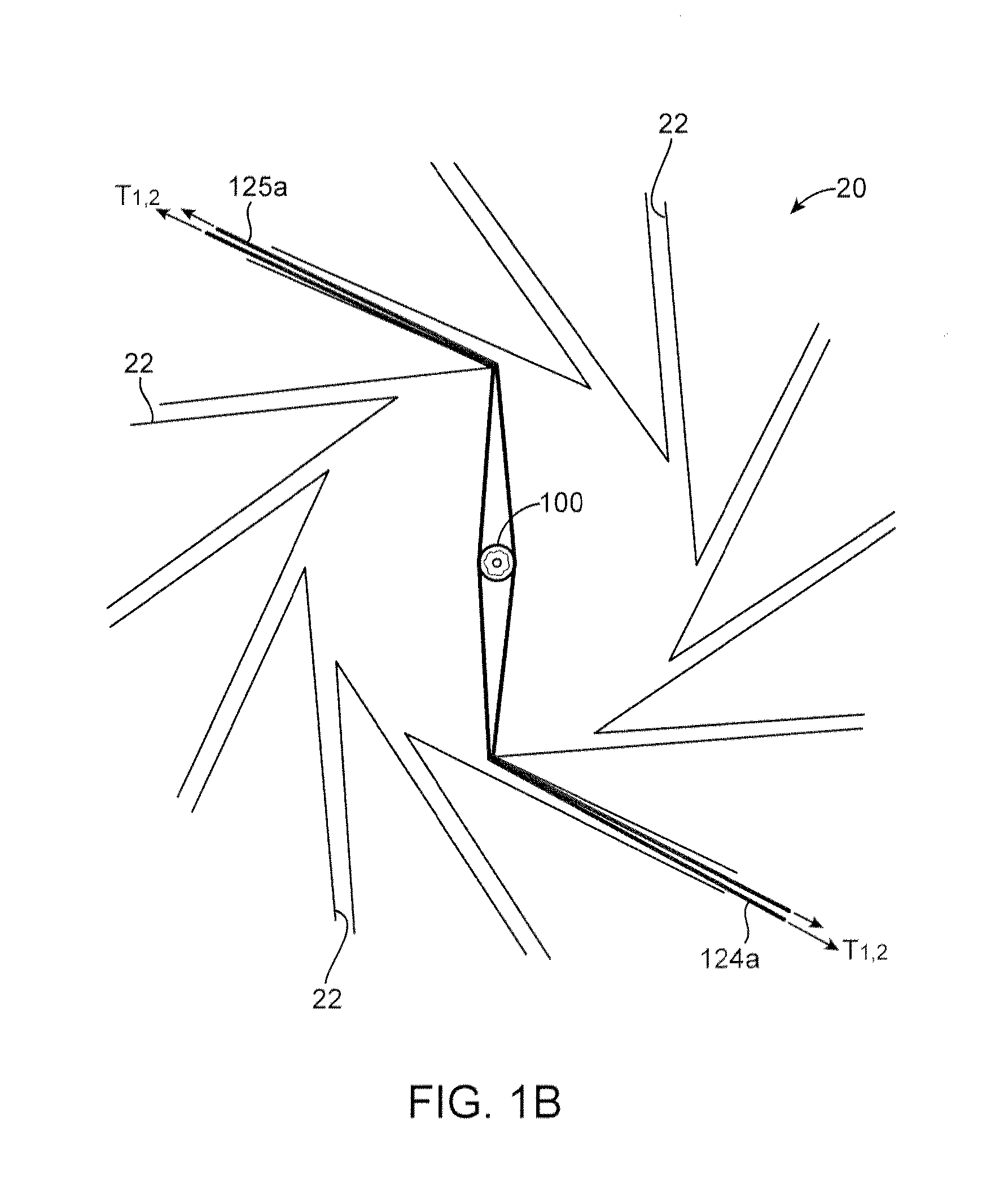Reducing crimping damage to polymer scaffold
a polymer scaffold and crimping technology, applied in the field of drugeluting medical devices, can solve the problems of frequent damage to the scaffold structure, the metal edge of the blade will permanently deform the strut, and the inability to use the cylindrical sheath cover, so as to reduce damage, improve batch yield, and improve the effect of significant improvemen
- Summary
- Abstract
- Description
- Claims
- Application Information
AI Technical Summary
Benefits of technology
Problems solved by technology
Method used
Image
Examples
examples
[0071]The crimping sequence for a 3.0×18 mm PLLA scaffold having the pattern illustrated in FIG. 5 is illustrated as an example. The initial pre-crimp moves the blades forming the iris from a starting diameter of 0.136 in to a diameter of 0.083 in where it remains for a 30 second dwell. This is stage 1. During this stage balloon pressure may be applied to stabilize the scaffold, in an amount of about 2 to 15 psi. The scaffold and balloon upon which the scaffold rests is then removed from the crimper and the alignment with balloon markers verified. The diameter reduction to 0.082 in loosely secures the scaffold to the balloon so that it can hold its place but is still capable of being adjusted relative to balloon markers. The scaffold is returned to the crimper.
[0072]Stage 2 of the crimping sequence moves the blades forming the iris from to a 0.068 in and is held for 15 seconds. During this stage, the balloon is inflated to about 17 to 100 psi. After this stage is complete, the ballo...
PUM
| Property | Measurement | Unit |
|---|---|---|
| length | aaaaa | aaaaa |
| diameter | aaaaa | aaaaa |
| diameter | aaaaa | aaaaa |
Abstract
Description
Claims
Application Information
 Login to View More
Login to View More - R&D
- Intellectual Property
- Life Sciences
- Materials
- Tech Scout
- Unparalleled Data Quality
- Higher Quality Content
- 60% Fewer Hallucinations
Browse by: Latest US Patents, China's latest patents, Technical Efficacy Thesaurus, Application Domain, Technology Topic, Popular Technical Reports.
© 2025 PatSnap. All rights reserved.Legal|Privacy policy|Modern Slavery Act Transparency Statement|Sitemap|About US| Contact US: help@patsnap.com



